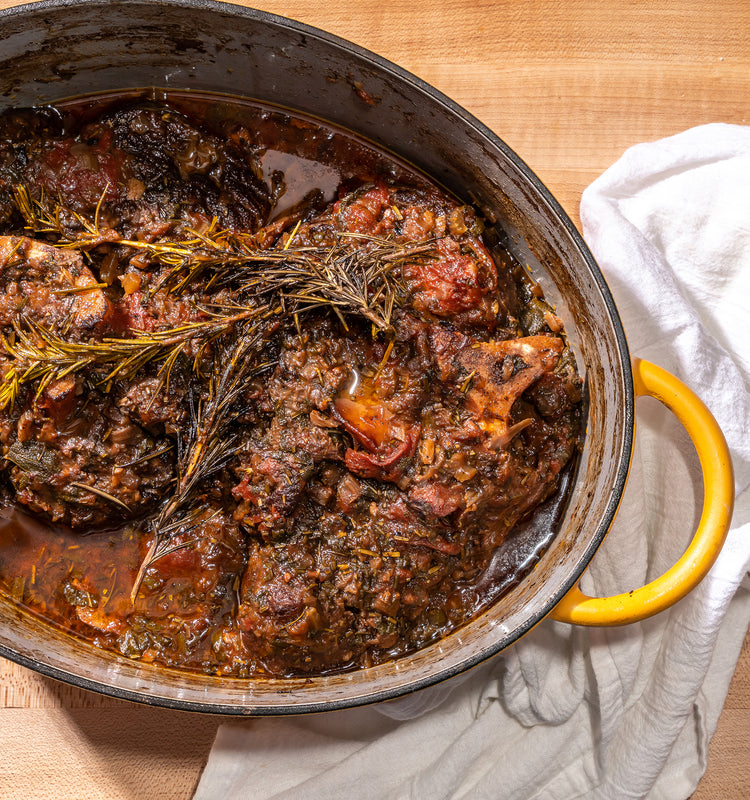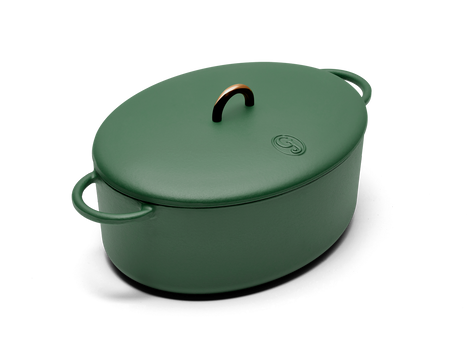The most critical stage of a braise is the browning you do at the start, and The Dutchess's gray interior makes it very easy to see this happen. When you are slow cooking meat, it's really important that you remove any bits that are slightly burned during the browning process.
And the heat conduction of The Dutchess is such that it's really, really regular, which is absolutely essential when you're cooking things for a long period of time. You want the vessel to retain heat, and that's what's going to give you meltingly tender, cut-with-a-spoon, falling-off-the-bone meat. Everyone should dig in at the table and almost make a ragoût and a sauce with that meat on top of the pasta. The Dutchess is ideal for that.
- Season the beef shins heavily on both sides with salt and pepper. Preheat the oven to 400°F.
- Heat your Dutchess over high heat and add 2 tablespoons olive oil.
- When the oil is hot, add the beef and brown well on both sides. Be patient and try not to move the meat — browning is the critical step to building flavor in the dish. When the meat is golden and crusted, set aside.
- Wipe out any burned bits from the pan. (The Dutchess’s interior color makes it easy to see which caramelization you want to keep and which areas are a little too dark to flavor the braise.)
- Turn the heat down and add remaining olive oil. Add the onion and celery, plus a sprinkle of salt, and cook until soft. Add the garlic, sage, and chopped rosemary to The Dutchess and cook for a few more minutes before adding the tomatoes.
- Return the beef and any juices that may have run out to The Dutchess. Add the wine and bring to a simmer.
- Place a cartouche over the beef before covering with the lid. Cook in the oven for 4 to 5 hours. Check every hour and add a little water if the meat becomes exposed.
- When the meat is so tender that it can be cut with a spoon, remove from the oven and let sit.
- Remove any excess fat that may have come to the surface of the braise, and place the whole rosemary sprig in the juices to infuse with some bright rosemary flavor.

























